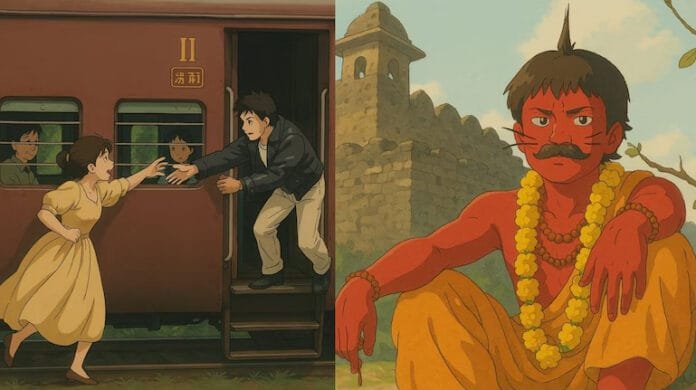Social Media Frenzy Over AI-Generated Studio Ghibli Art Triggers Debate on Copyright and Accessibility
March 30, 2025 | Tech & AI News
A new AI-powered trend has taken the internet by storm—Ghibli-style portraits generated using Grok AI, Elon Musk’s artificial intelligence model developed under xAI. Thousands of users have been experimenting with the tool to create stunning anime-like images inspired by the legendary Studio Ghibli. However, just as the trend reached peak popularity, xAI imposed a paywall, limiting free access and prompting backlash from users worldwide.
How It Started: The Rise of Ghibli AI Art
Over the past week, Twitter (X) has been flooded with AI-generated Ghibli-style images, as users shared their dreamy, hand-painted portraits created using Grok AI’s image generator. This feature, which leverages advanced diffusion models, allowed users to transform their photos into illustrations reminiscent of Hayao Miyazaki’s iconic films like Spirited Away and My Neighbor Totoro.
Tech influencers and AI enthusiasts quickly caught on, sharing their results and tutorials on how to create these “Ghiblified” images for free. Some posts amassed millions of views, making “Ghibli AI Art” one of the top trends on Google and X Trends this week.
However, the explosion of interest soon became overwhelming. Within just 48 hours, the demand for Ghibli-style images exceeded xAI’s processing limits, leading to delays and system slowdowns.
Grok AI Implements a Paywall, Sparking Outrage
As interest continued to surge, xAI swiftly responded by placing usage restrictions on the tool. On March 29, users attempting to generate images were met with a message stating that Ghibli-style AI art would now require an X Premium+ subscription—costing $16 per month.
The decision triggered widespread backlash. Many users took to X, Reddit, and Discord to express their frustration, arguing that AI-generated art should remain accessible, especially since it was previously free.
“This was the first time an AI tool truly captured the magic of hand-drawn Ghibli aesthetics, and now they’re locking it behind a paywall?” one user tweeted.
Another commented: “First they made verification a paid feature, now they’re charging us for AI art? Feels like a cash grab.”
Despite the criticism, xAI defended the move, stating that the high server demand and computing costs made unrestricted free access unsustainable.
Copyright Concerns: Is AI Art Stealing from Ghibli?
Beyond the paywall controversy, the viral trend has also reignited discussions about AI’s role in creative industries.
Studio Ghibli has not officially commented on the trend, but its co-founder, Hayao Miyazaki, has been a vocal critic of AI-generated art. In a 2016 interview, Miyazaki dismissed AI-generated animation, calling it “an insult to life itself.”
Legal experts point out that AI models like Grok are typically trained on existing artworks, raising ethical concerns about whether the generated images infringe on Studio Ghibli’s artistic style.
Despite these concerns, some artists argue that AI-generated art should be seen as a tool rather than a replacement for human creativity. Others, however, worry that AI could dilute the value of hand-drawn animation.
What’s Next? The Future of AI-Generated Art
With xAI restricting free access to its Ghibli-style generator, users are now looking for alternative AI tools that offer similar results without a paywall.
Several platforms, including Ghibli AI App and getimg.ai’s Ghibli Diffusion, offer free and paid AI-based Ghibli filters, though none have gained the same level of viral traction as Grok’s version.
Meanwhile, AI companies face increasing pressure to clarify how their models source and generate images, especially when mimicking distinct artistic styles.
As AI-generated art continues to evolve, the debate between innovation, accessibility, and artistic ethics is far from over.
The question remains—should AI-generated art be freely accessible, or is monetization inevitable?
















